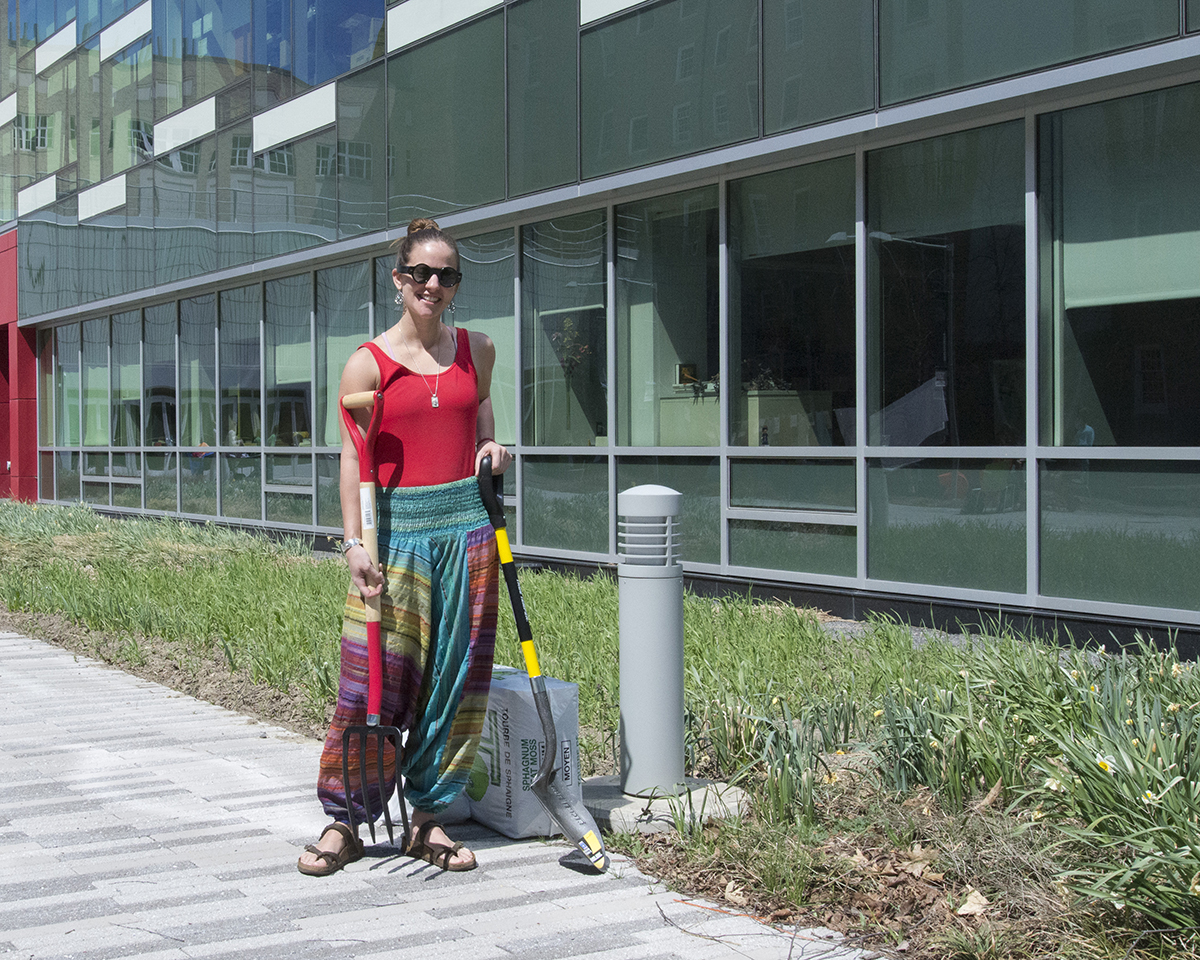Natural dye garden promotes a greener fashion supply chain

College of Human Ecology faculty and student efforts to develop sustainable approaches to textile and fashion design has led to the development of the Cornell Natural Dye Garden after a successful crowdfunding campaign that ended in fall 2016.
The project raised $10,365 for the development and cultivation of a dye garden, which will produce a variety of colors that come from the natural world and have a lower environmental impact.
“We know that synthetic dyes cause incredible environmental harm and pollute waterways. Human health is also impacted, particularly for laborers in the textile dyeing industries,” said Denise Green, assistant professor of fiber science and apparel design.
According to organizers, up to 200,000 tons of synthetic dyes are discharged into waterways around the globe every year, making textile dye plants the second-largest polluter of water after agriculture.
In many developing nations where textiles are produced, workers may not be properly protected from the toxic chemicals used to dye fibers and fabrics, making synthetic dyes hazardous to environmental and human health, Green said.
In contrast, natural dyes, some of which come from weeds, are nontoxic. Some of these dye plants have the ability to grow aggressively without herbicides or fungicides.
“We believe natural dyes are an opportunity to make a sustainable intervention in the apparel supply chain,” Green said.
In May 2015, Green, in collaboration with fellow fiber science and apparel design faculty and students, as well as Human Ecology Facilities Services and Cornell Botanic Gardens staff, planted a test garden of natural dye plants at the northeast corner of the Human Ecology Building overlooking Beebe Lake.
“That success led us to the idea to put the garden in a place that’s more accessible for students and more visible in terms of our college life,” Green said.
In spring 2016, Green and her students moved the garden to a plot located in the courtyard between Martha Van Rensselaer Hall and the Human Ecology Building. The relocation of the garden, according to Green, allows students and faculty to grow a wider array of dye plants to be used in teaching and research.
“The new location is highly visible,” Green said, adding that plans are in place to add educational signage for the 2017 growing season.
“Signage means that the garden won’t just be beautiful to look at, and valuable as a natural dye resource, but it will also be an opportunity to educate students, staff and the public about the plants we are growing and the range of colors they yield,” she said.
Beyond working on projects, Green hopes the garden will have deep and long-lasting impacts on fiber science and apparel design students who begin careers in the manufacturing and fashion industries.
“Our hope is they become conscientious citizens of the world who think about the impact that their design will have on the environment, on human health and on many people, which we don’t often think about when we consume fashion,” Green said.
This article is written by Stephen D’Angelo and was originally published in the Cornell Chronicle on April 24, 2017.
